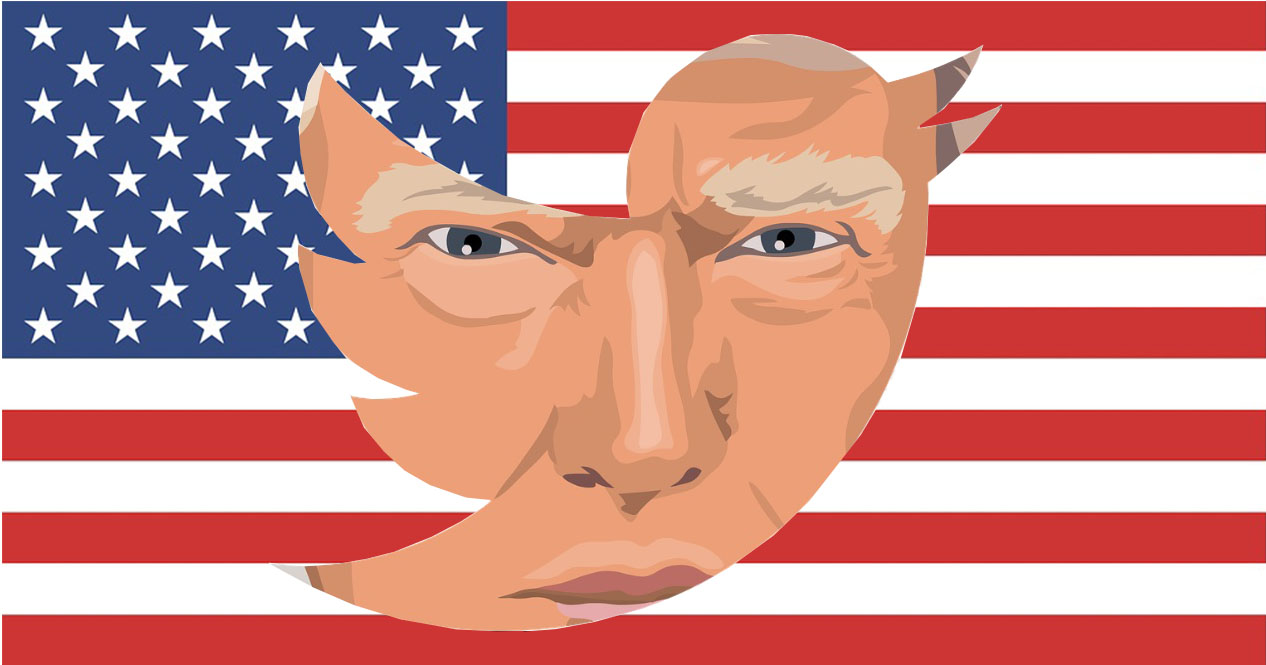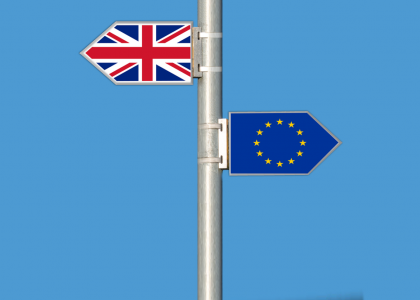Early Friday morning Twitter added a “glorifying violence” warning label to a Trump tweet about the George Floyd street protests/riots/arson/looting in Minneapolis.
Twitter followers could not see any of the Trump tweet without first looking at and clicking through this warning label.
“[Twitter warning label of 29 May 2020] This Tweet violated the Twitter Rules about glorifying violence. However, Twitter has determined that it may be in the public’s interest for the Tweet to remain accessible.”
“[@realDonaldTrump tweet of 29 May 2020] ….These THUGS are dishonoring the memory of George Floyd, and I won’t let that happen. Just spoke to Governor Tim Walz and told him that the Military is with him all the way. Any difficulty and we will assume control but, when the looting starts, the shooting starts. Thank you!”
In response Trump railed against Twitter claiming that the above tweet was not a threat but merely an advisory or cautionary warning of what happens following looting. He tweeted
“[@realDonaldTrump tweet of 29 May 2020] Looting leads to shooting, and that’s why a man was shot and killed in Minneapolis on Wednesday night – or look at what just happened in Louisville with 7 people shot. I don’t want this to happen, and that’s what the expression put out last night means….”
However, Trump then ramped up his violent rhetoric in response to angry demonstrations at the gates of the White House.
“[@realDonaldTrump tweet of 30 May 2020] Big crowd, professionally organized, but nobody came close to breaching the fence. If they had they would have been greeted with the most vicious dogs, and most ominous weapons, I have ever seen. That’s when people would have been really badly hurt, at least.”
It was as though Trump was daring Twitter to add further warning labels. But it didn’t, perhaps thinking it wiser not to labour the point that it could.
And so, what started early last week as a war of words (tweets) between Trump and Twitter concerning the tech giant’s decision to add a fact-check icon to the bottom of a Trump tweet about mailed-out ballots (also groundbreaking) has now erupted into all out war.
Trump had earlier used an executive order to threaten Twitter, and other major Internet platforms, to call for a change to, or repeal of, Section 230 of the Communications Decency Act (CDA) of 1996. This Act provides a kind of safe harbour to Internet platforms in the US. It treats them as hybrids: when it comes to their right to edit/delete content they are publishers, but when it comes to their potential liability for failing to remove illegal content they are mere conduits like telephone companies.
In Europe the situation is already quite different, as a recent Council of Europe study has demonstrated. In Germany and France, for example, Internet platforms can be held legally responsible and fined for patterns of failure to remove illegal content. And the signs are that a new EU Digital Services Act may copy the model for all member states.
Twitter has stood up against Trump in the face of these threats. Why? Maybe because it calculates that the legal and political challenges to amending Section 230 will be insurmountable for Republican lawmakers, even if they accede to Trump’s desires.
Perhaps Twitter reckons that Trump will lose the presidential election later this year and/or that Republicans will lose both the Senate and the House (Covid-19 permitting), before any meaningful law change can be achieved. Indeed, Twitter could see this as part of the effort to remove Trump. Win this battle, and it may prove decisive in the war.
Alternatively, it may be that Twitter just believes this is the right thing to do. Last year Twitter adopted a new policy of using warning labels—a type of content management as opposed to content removal policy—for tweets that violate its content rules (including rules on violent threats, glorification of violence and hate speech) when the tweets originate from the accounts of political figures. It argued that this was the right way to balance the special importance and value of free speech for political figures and the public interest in removing harmful content from Internet platforms.
Some people argued at the time—as my colleague and I did in a book on the politics of hate speech—that Twitter was fudging its own content rules without sufficient cause. The special status, power and celebrity of politicians is not, we argued, a justifiable reason to leave their harmful and transgressive words up on Twitter but rather a decisive justification to remove them just as similar hate speech by ordinary Twitter users is removed when it violates the Twitter Rules. Indeed, managing politician’s words with warning labels may only serve to highlight and valorize them, albeit doing so may also help to diminish any symbolic authorization associated with leaving them up.
That said, it is fair to say that Twitter’s stand is an act of democratic courage. Trump is famous for doubling down on his enemies. Twitter just doubled down on Trump.
More generally the Trump v Twitter story is emblematic of the entire Trump presidency. It touches on his use of Twitter to attack his enemies, “fake news” and Internet companies including Twitter itself (the irony seems lost on Trump); his use of hate speech including dog whistles surrounding immigration and voter fraud; his failure to meaningfully tackle the issue of police violence against African Americans and the symbolism of his support of the police and denunciation of forms of black activism; his increasingly bellicose language to push his policy agendas especially on law and order and foreign policy; his growing exasperation at negative press coverage of his presidency; his allegations of widespread tech industry bias against conservative, alt-right political voices and perspectives in America; and his penchant for making public declarations (often on Twitter) of new public policies that in fact exceed his proper authority as President under the Constitution of the United States.
Arguably this is an unprecedent moment in American digital democracy. Twitter’s actions show that if Trump wishes to exploit the large public platform provided by tech companies like Twitter to speak directly to US voters (both registered and unregistered) and to the twitterverse, then he must play by their rules (almost) like everyone else.
Of course, Trump could always delete his Twitter account rather than waiting for a change to Section 320 that would prevent Internet platforms from adding fact-check icons and warning labels to his online messages. But even Trump knows that he needs his Twitter account to help disseminate his pitch to the electorate. He could move onto Gab, and speak directly to his political base. However, then he would risk no longer reaching moderates, swing voters or the few remaining undecided voters. In the end Trump wants to win the 2020 presidential election more than he wants to beat Twitter.
Dr. Alex Brown is Reader in Political and Legal Theory at the University of East Anglia, and author of A Theory of Legitimate Expectations for Public Administration.





